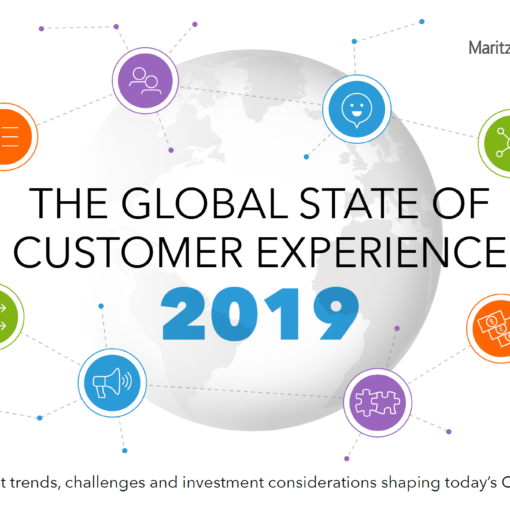Many organizations aspire to become customer-centric, yet despite investments in customer experience initiatives, technology, and training, the results often fall short of expectations. Research consistently shows that the missing ingredient in most unsuccessful transformations is not strategy or tools, but culture and leadership. Without the right organizational mindset and executive commitment, even the most sophisticated customer initiatives are destined to underperform.
THE CULTURAL FOUNDATION OF CUSTOMER CENTRICITY
Customer centricity is not a department, a project, or a temporary initiative – it’s a fundamental way of operating that must be embedded in an organization’s DNA. While processes and technologies can be implemented quickly, cultural transformation requires sustained effort, authentic leadership commitment, and systematic reinforcement at all levels of the organization.
WHY CULTURAL TRANSFORMATIONS FAIL
Many customer centricity initiatives encounter these common cultural obstacles:
1. Leadership Misalignment
When executives send mixed messages – verbally championing customer focus while rewarding purely financial outcomes – employees quickly discern the disconnect. This credibility gap undermines transformation efforts from the start.
2. Middle Management Resistance
Middle managers often become bottlenecks in customer-centric transformations. Caught between strategic directives from above and operational realities below, these crucial change agents may lack the tools, incentives, or conviction to drive cultural shifts in their teams.
3. Functional Silos
Customer-centric cultures require cross-functional collaboration, yet most organizations remain structured around vertical specializations with separate goals, metrics, and reward systems. These silos create friction in the customer journey and fragment the customer experience.
4. Short-term Performance Pressure
Quarterly performance expectations can undermine longer-term cultural investments. When faced with choosing between immediate financial results or building sustainable customer relationships, many organizations default to the former.
5. Capability Gaps
Even motivated employees cannot deliver customer-centric behaviors if they lack the necessary skills, tools, and autonomy. Training programs that focus only on surface behaviors without addressing underlying capabilities create frustration rather than transformation.
THE LEADERSHIP IMPERATIVE
Truly customer-centric cultures begin with leadership that demonstrates specific characteristics:
1. Customer-Connected Leadership
Leaders who regularly spend time with customers develop intuitive understanding that cannot be gained through reports alone:
- Directly participate in customer interactions (not just ceremonial occasions)
- Regularly review unfiltered customer feedback
- Include customer discussions in every leadership meeting
- Make decisions based on customer impact, not just financial outcomes
2. Symbolic Actions
Leaders shape culture through the power of symbolic behaviors that signal priorities:
- Visibly celebrate employees who deliver exceptional customer experiences
- Address customer issues personally when systems break down
- Allocate premium office space to customer-facing functions
- Begin meetings with customer stories rather than financial updates
- Make customer metrics as visible as financial metrics
3. Decision-Making Frameworks
Customer-centric leaders institutionalize decision-making approaches that prioritize customer considerations:
- Require explicit customer impact analysis for major decisions
- Evaluate innovation opportunities through customer value lenses
- Design governance systems that give customer advocacy sufficient weight
- Create formal escalation paths for customer-damaging policies
4. Resource Allocation
How leaders allocate resources reveals their true priorities:
- Invest in customer understanding and insights capabilities
- Fund cross-functional customer journey improvements
- Protect customer experience budgets during downturns
- Allocate executive time to customer-related activities
BUILDING A CUSTOMER-CENTRIC CULTURE
Beyond leadership behaviors, creating a customer-centric culture requires systematic approaches:
1. Employee Experience Design
Customer and employee experiences are intrinsically linked. Organizations should:
- Apply the same rigor to employee journey mapping as customer journeys
- Remove friction that prevents employees from serving customers
- Create physical and digital workspace designs that reinforce customer focus
- Develop internal service standards between departments
2. Recognition and Reinforcement Systems
What gets recognized gets repeated:
- Design performance metrics that balance customer and financial outcomes
- Create recognition rituals that celebrate customer-centric behaviors
- Share customer success stories systematically through internal channels
- Develop peer recognition programs that highlight collaboration
3. Hiring and Onboarding
Culture begins with who joins the organization and how they are integrated:
- Include customer-centric attitude assessments in hiring processes
- Integrate customer experience elements in onboarding programs
- Assign customer-focused mentors to new employees
- Create early opportunities for customer interaction regardless of role
4. Capability Building
Customer-centric organizations invest in specific capabilities:
- Empathy and emotional intelligence training
- Customer journey mapping skills
- Design thinking methodologies
- Data interpretation and customer analytics
- Cross-functional collaboration techniques
5. Cultural Measurement
What gets measured gets managed. Leading organizations track cultural indicators:
- Employee Net Promoter Score (eNPS) with specific cultural dimensions
- Customer-centricity perception surveys
- Cultural assessment tools that measure alignment
- Behavioral observation of key cultural moments
THE PATH FORWARD: FROM ASPIRATION TO ACTION
Building a customer-centric culture requires moving beyond aspirational statements to concrete actions:
- Assess honestly where your culture stands today
- Identify the critical few behaviors that would make the biggest difference
- Start with leadership alignment to ensure consistent modeling
- Create momentum through early wins and visible changes
- Systematize the reinforcement mechanisms
- Measure progress through both leading and lagging indicators
- Connect culture explicitly to business outcomes
CONCLUSION
In the pursuit of customer centricity, organizations often invest disproportionately in external-facing initiatives while underinvesting in the internal cultural foundations that ultimately determine success. By recognizing that customer centricity begins with leadership commitment and cultural alignment, organizations can build sustainable competitive advantage that competitors cannot easily replicate.
The most successful customer-centric organizations understand a fundamental truth: you cannot create an exceptional customer experience without creating the cultural environment where such experiences naturally emerge. When leaders commit to building this environment, customer centricity transforms from an initiative to an identity.




